| |
 
THE PAPER
INDUSTRY OF BRAMSHOTT
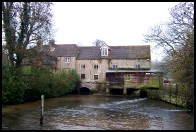 |
|
The
undulating woodland and the damp,
picturesque valleys to the north and west
of Liphook are among the quietest and
least known places in our local
landscape. Yet for centuries this area,
dominated by the Royal Forest of Woolmer
and the southern arm of the River Wey,
was alive with the noise of industry.
It can be traced back to the time of the
Romans, who worked iron here, and by the
seventeenth century the Lord of the
Manor, Henry Hooke, had developed a
considerable industry, only for it to die
out by the middle of the eighteenth. He
had ironworks in nearby Hammer Vale, and
thought to add to his capacity by digging
out the three ponds known as Waggonners
Wells. |
It is not known
whether this scheme actually came to fruition, as
no industrial remains have been found in the
vicinity, but the ponds have become a place of
rare beauty.
Other industries thrived in the district: milling
corn, for example, which happily survives to this
day at nearby Headley Mill, broom-making and
above all, paper-making. There were more than
twenty mills along the course of the River Wey,
and several shared common ownership within the
parish of Bramshott.
It appears that Bramshott Mill was first used for
the manufacture of paper in 1684, and by 1757,
together with three other mills close by, was
owned by the Pim family, who were descendants of
Henry Hooke, and remained at the mill until 1809.
But the great period of the Bramshott Mill, and
in due course the others at Standford and
Barford, began in 1822, when William Warren
became the owner.
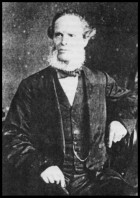 |
|
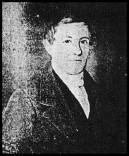 |
|
Warren, a
prominent Methodist, came from a family
of papermakers in Devon, and arrived in
the district after marrying Elizabeth
Roe, of Midhurst. The firm rapidly
expanded and by 1852 Warren’s two
sons, George Roe and Andrew, had entered
the firm, which became known as Wm.
Warren & Sons. They were
benevolent employers, building cottages
on Passfield Green for the workers, and
others close by at Conford. Their workers
were all made members of the Bramshott
Provident Friendly Society, and always
enjoyed an annual outing, in 1851
travelling to the Great Exhibition in
Hyde Park on what must have been the trip
of a lifetime. The family remains in the
district to this day.
|
| Some idea
of what the Bramshott and Standford Mills
looked like in their hey-day can be
gained from the bill-heads which survive,
which also show some of the wide variety
of papers the firm produced: glazed,
air-dried & pure hope browns, whites
and coloured, paper bags for every trade,
tea and coffee papers, account books and
bill-heads, envelopes and note papers.
Yet despite making this, the firm was
hardly profitable, as one year’s
accounts for Standford Mill show.
Outgoings were £222. 0s.7d, of which
£105. 14s. 6d. was spent on materials
and £62. 0s. 7d. on wages. |
|
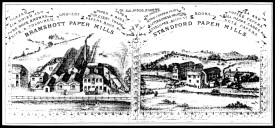 |
A
machine man earned 3 shillings a week. The mill
earned £195. 10s. by selling paper, and
therefore lost more than £26 during the year.
Tiny sums by today’s standards, but enough
to close the mill down in 1886.
The last Warren to work Bramshott Mill became
bankrupt in 1896, but somehow it survived under
the management of Portals of Laverstoke, a highly
respected and long established firm who made
paper for the Bank of England. At Bramshott they
produced paper for Post Office postal orders,
employing almost 100 people until their lease
expired in 1924.
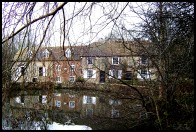 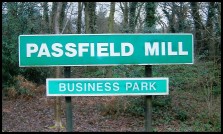 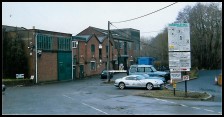
After
the war what was left of the buildings, including
the warehouses built during the 19th century,
became part of Passfield Mill Business Park,
housing a variety of small businesses, some small
reminder of the industries that had thrived in
the Wey Valley for centuries.
Tom Muckley, January
2006
This article was originally
published by the
Petersfield Post
tommuckley.co.uk
|
|








